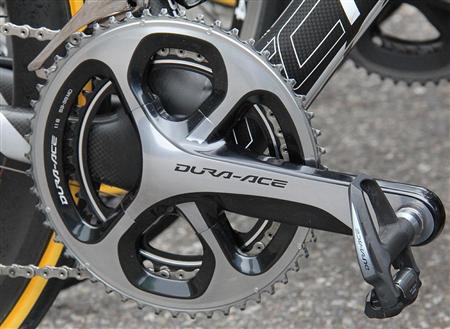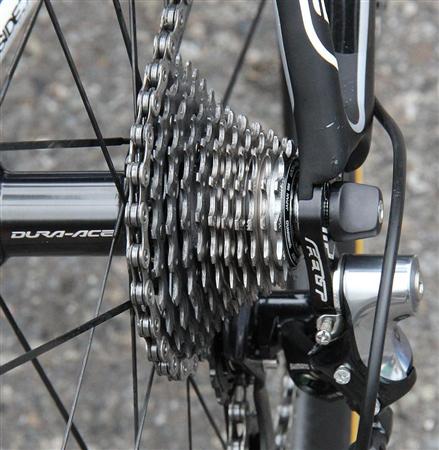 I don’t have much time for a post today, but this is worth a quick mention. A Japanese website has a few spy shots of what appears to be the new Dura-Ace 11 speed 9000 grouppo. I first spotted these photos by way of Bike Hugger, but you can also find discussion of this at Bike Rumor, Slowtwitch, and many other places on the web.
I don’t have much time for a post today, but this is worth a quick mention. A Japanese website has a few spy shots of what appears to be the new Dura-Ace 11 speed 9000 grouppo. I first spotted these photos by way of Bike Hugger, but you can also find discussion of this at Bike Rumor, Slowtwitch, and many other places on the web.
The design of the unevenly spaced 4 bolt crankset is definitely different, and I suspect people will either love it or hate it. Personally I like the look of it, though it is another nonstandard chainring bolt pattern. Hopefully this new crank will use a common bolt circle diameter for compact and standard chainrings, which would make sense to me as I like to run both. An eleven speed cassette is something that I didn’t really want to see, but we all knew it was coming from Shimano soon. Enough from me though, let me know what you think of this group. Whether you like, dislike, or don’t care… share your thoughts in the comments.


Leave a Reply